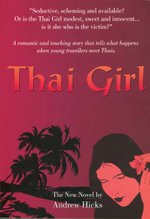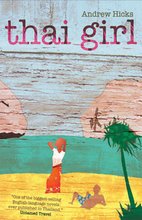






I am so sorry that Preah Vihear, the Cambodian temple on the Thai border has once again become a political football, souring relations between the two countries.
Called Khao Phra Viharn in Thai, it is just two hours from where we live and I keep on going back as for me it is truly a magical place. I’ve been there ten times in the last few years and I want to go another ten.
Though the Khmer temples at Angkor are far grander in scale, the natural setting of Khao Phra Viharn is beyond compare. It sits at the top of a cliff and as you stand there looking down at hundreds of miles of Cambodian plain and mountain spread before you, at your back a thousand year old symphony in stone, this must be one of the most remarkable places in the world.
The temple often acts as a lightning rod for tensions between Thailand and Cambodia as it is the Cambodian and not the Thai flag that flies over it. In 1962 the International Court of Justice decided a border dispute referred to it by Cambodia, ruling that the temple was within Cambodia and that the Thais must withdraw their troops. The Thais were outraged and have never forgotten this slight from the minnow to the east.
Now managed by the Cambodians in a pleasant state of sleepy under-development, little girls and old ladies wander through the ruins beseechingly selling postcards and cold drinks and whenever there are tensions between the two countries, the Cambodians assert their authority and close the temple to visitors. Whether the pretext is pollution flowing into Thailand from the stream below the temple or a Thai helicopter allegedly overflying Cambodian airspace, it always spells doom for the poor vendors who abruptly lose their livelihood.
The decision of the Court was that maps drawn up during the French colonial era and at least implicitly accepted by the Thais placed the temple in French Cambodia notwithstanding that geographically it is within Thailand. Standing on top of a gently rising escarpment and cut off from Cambodia by the cliff, it must always have been approached from the Thai plateau.
The usual presumption is that international borders follow the watershed. In this case the watershed is the cliff edge, which would put the temple within Thailand, but the Court concluded in this case that the treaty ruled otherwise. Unequal treaties by which colonial powers sought to extend their territory are nonetheless taken to be valid.
The latest saga is that Cambodia has now made an application to UNESCO for the listing of the temple as a World Heritage Site and again the Thais are outraged. The new Thai government seems prepared to co-operate but the opposition Democrats have made it a major issue in domestic politics, attempting to bring down the government. Charging that a deal had been done to allow the Cambodian application proceed in return for a casino concession for Thaksin Shinawatra, the shadowy power behind the PM, the opposition has obtained a court injunction to stop the government supporting the application for listing and has stirred up extreme nationalist fervour against Cambodia.
The whole conflict is damaging for all sides. If the Thais could only accept the reality of Cambodian sovereignty over the temple and support an application for listing, there would be benefit for all, especially for the poor vendors in the temple.
The approach to the temple from the Thai side is scheduled as a National Park so the Thai authorities already collect entry fees equivalent to those charged by the Cambodians for the temple itself. As the access and the only population centres are on the Thai side, virtually all associated tourism primarily benefits the Thais. The Thai province of Si Saket is one of the poorest in the country and desperately needs its one significant tourist attraction to be promoted by harmonious progress towards a World Heritage listing.
The current dispute could now close the temple and sour relations between the two countries for years, thus doing considerable self-inflicted damage to Thailand.
The more intransigent the Thais prove to be, the more the Cambodians will try to develop the approaches to the temple from their own side. There is talk of foreign funding for a major road through the jungle, of building a cable car up the cliff and, perish the thought, of casinos in the vicinity.
When I first visited the temple seven years ago, the view from the top was totally untouched by humanity. Though the jungle has perhaps been stripped of the best timber, there was not a road or a man-made structure in view for a hundred miles in any direction. Now already there is a dirt road with trucks crawling along it like ants and small shanty towns at the intersections. I fear what the future will bring. The great charm of the temple and its surroundings is that it remains under-developed and innocent, but all that soon may change.
In recent times it has been the focus of violent conflict as it was one of the last strongholds held by the Khmer Rouge long after the fall of Pol Pot, the genocidal leader of Cambodia. Indeed one of their cannons still stands high on the hill facing back towards Thailand.
Now once again the atmosphere is laden with doom and it all seems so unnecessary. As I walk up the steep stone avenue towards the temple steadfastly refusing all offers of postcards, the little girls gaze hopefully at me. ‘Okay, mister. Not buy postcard now, but maybe later come back.’
Maybe I'll be able to but maybe not.
My heart usually melts for them or for the boy who in competent English tells me his life ambition is one day to go to school. My hand slips into my pocket for a few baht, always to be rewarded with a million dollar smile.
The temple and the simplicity of these people thus enriches me and all who go there, while the barrenness of racist nationalism and partisan politics that is now rearing its ugly head diminishes all of us. So harshly affecting this most beautiful of places, the petty behaviour of politicians could not be more grotesque.





4 comments:
I have only been there once.
I did a report here with pics: http://teakdoor.com/thailands-wats-temples-and-mosques/21097-memock-does-khao-phra-viharn.html
Is it still 400 baht on the thai side then plus another 200 on the cambodian side?
I am not a temple person but this plae is indeed something else. I will be going back.
G'Day Andrew, I just finished reading your second book "My Thai Girl and I" and thought it was fantastic. I could relate to all you speak about probably because I once lived not but a few km from your beloved Ban Sawai. I now live in Chonburi but quite often the family and I visit family in Surin. I will keep an eye out for your self and Cat next time im roaming around in the Sangkha market. Cheers, Grant
grant_dawso@hotmail.com
Hi Andrew. I would love to take my family to see the temple before the area is overun with concrete shanty towns and plastic. Maybe Cambodia will do a better job of looking after the site.
Much as I love Thailand and Thai people, they have an amazing ability to s**t in their own nest. Nowhere has so much natural beauty or historical significance that it can't be improved by a few million plastic bags.
You worried in "My Thai Girl and I" about seeming negative. I don't even move to Thailand until next January. Ha Ha!
Thanks MeMock.
I've just had a look at your post onTeakdoor and I entirely agree with you about the Thais charging for nothing to approach the temple. I even had a letter published in The Bangkok Post saying what a rip-off this is and a disincentive to toursm in a poor province. It made me madder when they recently adjusted some of the National Park charges downwards but kept this one at the top level. It's simply a toll to pass over the road to the border and the temple.
In the context of the present dipute, it's the Thais who are cutting off the flow of tourist funds and they have every interest in patching up the quarrel.
Do get in touch, Grant if you come this way.
And Mick I quietly agree with what you say. The thing that's nice about this particular temple is that it is peacefully underdeveloped. When money is thrown at a historical site and the trippers descend, its atmosphere quickly changes.
I fear for the future as in many ways it should be delevoped to stimulate Thai tourism and proper conservation may be forgotten.
So far it's been sleepily preserved and both countries should take credit for the way access has been allowed from Thailand without passport formalities in recent years.
The present dispute is all about domestic politics and strangely the present government was doing everything right in substance before the opposition jumped on them and made it a political football. All very sad.
Post a Comment